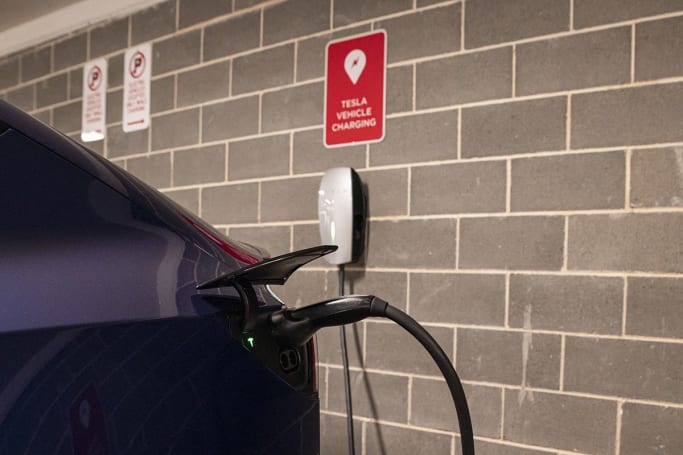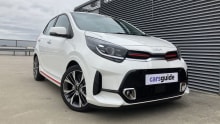
How much does it cost to replace a windscreen?
This used to be a simple question since most car windscreens were made from the...
Browse over 9,000 car reviews
_0.jpg)
Q: How much does it cost to charge an electric car?
A: In a nutshell, charging at home on solar panels is the cheapest way to recharge your electric car; using a commercial fast-charger will be the most expensive. But, this is another one of those apparently simple questions that produces a relatively involved answer.
That’s because there is more than one way and more than one structured cost to charge electric car technology, and the method you choose and the technology it embraces will have a big effect on the cost outcome.
An electric car is just that, a car that runs on electricity rather than petrol, diesel or any other type of fuel. The electricity powers the car’s motor and that’s what gets it from A to B.
Charging an electric vehicle (EV) can involve – depending on the specifications of the individual car - using a household power-point, a wall-mounted charge-box in your home garage or a public charging station that can be found at some conventional service stations, shopping centres and even car parks.
How much you pay for the charging will depend on (among other factors) the battery capacity of the vehicle, the charge speed offered by the charging station, the time of day or night you recharge and even whether the charging station is a commercial one or one that’s run by your local council.
The actual electric car charge cost will be a function of all those elements, which is why the question of how much does it cost to recharge an electric car in Australia is far from cut and dried.
So let’s tackle the scenarios one by one.

If you’re using a domestic wall socket or power-point, you’ll need to allow plenty of time to recharge an EV. That’s simply because the power-point can only feed power into the battery at a slow speed. Meantime, the price you’ll pay is the same as you’d pay to power any of your household appliances from the same power-point at the same time of night or day. If you have access to off-peak rates, then charging the car will be cheaper during those off-peak (generally late-night) times.
Let’s assume your normal daily rate from your power provider is 35 cents per kilowatt-hour (kWh) and you’re charging a 50kWh battery from dead flat (to keep the maths simple). On that basis, the charge will cost you $17.50 (35 cents multiplied by 50).

If you have a wall-box (what’s sometimes called a Level 2 charger) charging will be faster, but will cost the same per kWh as normal power-point charging. The catch is that you have to pay extra for the wall-mounted charger, so if you don’t need the convenience of faster charging, it may not be worthwhile.

If you have solar panels on your roof at home or work, the cost of charging drops if you charge the car while the sun is shining. It’s possible, of course, that the car will accept charge faster than your solar array can produce it (particularly if you’re using other appliances at the same time) in which case you’ll need to top-up the charging with power you pay for from the grid.
But as a means of offsetting charging costs – and staying green into the bargain – solar panels are a great way to go. The catch is that daylight hours is probably when you most want to use the car, not charge it.

These should be springing up everywhere, but Australia’s roll-out of this infrastructure is painfully slow. Meantime, there are two main types of commercial station. The first will charge your car at a rate of up to 50kW, and the second at a much faster 350kW. But it’s not that simple. That’s because some cars will accept a faster charge than others.
Smaller, cheaper EVs might be able to handle only a 40kW maximum charge rate. If that’s the case, there’s no point using the 350kW charger, because the rate will still max out at 40kW, yet you’ll be paying for the faster charge rate whether you can use it or not.
For EVs with bigger batteries, you might be able to cram the charge in at something like 250kW on the fastest charger, but we’re yet to see any car consume volts at the upper, 350kW rate.
Typically, you’ll pay something like 45 cents per kWh on the 50kW charger, and around 65 cents per kWh for the faster unit. That’s well and truly more than most people pay for their power at home. As in about 50 per cent more.
But if you’re on the road and need to recharge you don’t have a lot of choice. Just don’t forget that charging station car spaces are often limited, so you might find yourself waiting for a vacant charger at peak times such as long weekends and school holidays.
Also, for people who are concerned with the issue of how long does it take to charge my car, these fast commercial chargers are the go.

Some councils run fleets of EVs these days, so they’ve installed chargers at some of their offices and public car parks. If you can find one of these, they’re sometimes free, but don’t get too excited, because they’re usually pretty slow units – say, around 12 or 14kW. But for EV owners whose first question is; are EV charging stations free in Australia, these council ones are the one to seek out.
And, if you’re out shopping, one of these free chargers is a good way to top the car up while you’re gone, although leaving it on a charger for hours while others wait their turn is considered poor manners.
The other catch is that sometime, to access the free charger, you have to pay to use the car-park it’s located in. You wouldn’t be the first person to have been charged more for the parking than the value of the volts you managed to add to your car’s battery.

A handful of Tesla superchargers will accommodate non-Tesla cars, but those are in pretty far flung locations in regional NSW. You’ll also need to download the Tesla charging app (and thereby share your information with Elon) and charging is more expensive for non-Tesla cars.
In fact, at 79 cents per kWh, it’s about as pricey as it gets. Tesla’s electric car charger cost structure also includes penalties if you overstay your welcome. For instance, you’ll also be slugged up to a dollar per minute if you leave your car hooked up after it’s fully charged.

It usually involves an app on your phone which links an account you have established beforehand to the charger you want to use. There are various companies that offer this, but the smart move is to have all of their apps installed so it doesn’t matter which one you encounter on your travels
The other thing to know is what type of charging port your car has. It will be either a CHAdeMO or CCS port and they both require different hardware (which will be part of the commercial charger). At home, you’ll need the appropriate cables and connectors.
Charging electric cars is simple provided the app works and the charger itself is operating correctly. Unfortunately, in areas with weak internet signal, the apps can be problematic and the chargers are often out of order. The helpline phone number to a human operator will be your best bet if this happens.

According to most battery manufacturers, you’ll extend the life of your car’s battery pack by keeping it between 20 and 80 per cent charged. The advice is not to let the charge drop to anywhere near zero, nor to routinely charge beyond 80 per cent. By following that advice, you’re limiting yourself to just 60 per cent of the battery’s capacity, so how many kWh to add to the battery can involve a bit of mental arithmetic on the day.

Fundamentally, if you need to use the most expensive commercial chargers all the time (if you’re a travelling salesperson, for instance) then an EV might not work out as cheap as you might imagine. Let’s say you charge up at 65 cents per kWh on a fast charger to the tune of 50kWh. That’s going to cost you $32.50 and, in a vehicle that needs a typical 17kW to travel 100km, that much charge will take you almost 300km.
Now consider a modern petrol car that uses 8.0 litres per 100km on the freeway. That same 300km will consume 24 litres of fuel which, at today’s roughly $2 per litre, will cost you $48. But if petrol ever comes down in price to the $1.50 mark, that same journey will then cost just $36; much closer to the EV’s running cost and you haven’t had the same waiting time.
Of course, if you charge at home and use the EV in urban running where it’s most efficient, all bets are off and the electric car develops a huge advantage. But it’s all worth thinking about.










Comments